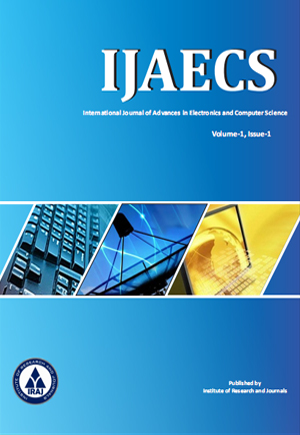|
Paper Title
Deep Learning Approach for Brain Disease Diagnosis
Abstract
Brain tumour is an unusual mass of tissue in which some cells multiply and grow uncontrollably. Early brain
tumour diagnosis plays a crucial role in treatment planning and patients' survival rate. Manual brain tumour detection is
complicated, time-consuming, and vulnerable to error. Hence, automated computer-assisted diagnosis at high precision is
currently in demand. It needs to be detected at an early stage using MRI or CT scanned images when it is as small as
possible because the tumour can possibly result in cancer. This paper mainly focuses on detecting and localizing the tumour
region existing in the brain by proposed methodology using patient's MRI images with the help of MATLAB. To pave the
way for morphological operation on MRI image, the image is first filtered using Anisotropic Filter. It helps to reduce
contrast between consecutive pixels. Anisotropic filtering is a method of enhancing the image quality of textures on surfaces
of computer graphics that are at oblique (slant) viewing angles with respect to the camera. It is superior to many other
filtering methods as it has a high PSNR (Peak signal to noise ratio) and low MSE (Mean Squared Error). After that, the
image will be resized, utilizing a threshold value. The image is then converted to a black and white image. This is done to
perform processing techniques on it. Classification of MRI images is an important part to differentiate between normal
patients and a patient who has a tumour in the brain. For this, Support Vector Machine (SVM) classifier is used. After the
SVM classifier, morphological operations will be applied to obtain information on areas of the possible tumour locations.
Morphological operations include dilation and erosion. Dilation is making the objects more visible and Erosion is making
objects less visible. Using both dilation and erosion, the tumour outline can be obtained. Then it is used to deliver final
detection result, i.e., detect and isolate the region of tumour. This method can be employed to accurately locate the tumour
when there is large data available. Using this can also help avoid human error during manual detection of tumour.
Keywords - MRI, CT Scan, Anisotropic, SVM, Morphological.
Author - Abhishek Kumar, Purvi Tiwari, Sachin Harne
Published : Volume-10,Issue-12 ( Dec, 2023 )
DOIONLINE Number - IJAECS-IRAJ-DOIONLINE-20374
View Here
| |
 |
| |
 |
PDF |
| |
Viewed - 15 |
| |
Published on 2024-02-15 |
|
|
|
| |
|
| |
|














